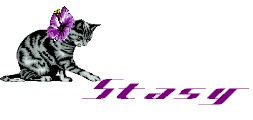


Mythos was one of the bands that helped forge the kraut rock sound back in the Seventies, and this release affords an intimate glimpse into their live performances. The band blended jam rock with electronics, tempering that mixture of raw and slick with a touch of flute which bestowed a certain lively pastoral flair to the band's sound.

MYTHOS: Superkraut, Live at Stagge's Hotel 1976 (CD on Sireena Records)
This release from 2011 offers 52 minutes of classic krautrock recorded live at Stagge's Hotel in Osterholz-Scharmbeck, Germany, on March 5, 1976.
In 1976, Mythos was Stephan Kaske (on flute, guitars, and vocals), Robby Luizaga (on bass and acoustic guitar), and Paradidel (on drums).
The guitar--let's check out the electric instrument first--the electric guitar blazes with a distinct rock expertise, delivering glistening chords that soar and sparkle, but possesses that gutsy demeanor that marked a period prior to the introduction of an horde of machinery to process and warp the resulting notes.
.Meanwhile, the acoustic guitar is difficult to discern, often getting lost in the brash vibrancy of everything else.
The bass rumbled with a bellowing authority, deep-throated and wide-shouldered, like a burly biker wandering through a crowd in a bar. While often relegated to the midst of the mix, there are several instances here in which the bass occupies the spotlight, functioning as the lead stringed instrument.
The percussion is boisterous and powerful, like it should be in a rock band. But the rhythms also stray into inventive complexity (of the type primarily found in jazz music of the time), excellently lending nimble locomotion to the music. The last track on the CD features a nicely flashy drum solo.
The electronics are hardly as dominant as one might expect, providing spacey embellishment rather than functioning as an equal participant. This is the way it was back then, when synthesizers were a new novelty, something to augment a tune instead of overwhelm things.
The presence of a flute in rock music was not too normal back then, yet the band manage to make its lilting presence sound natural. The strains are spry and add to the music's overall animation.
There are some vocals, but they are quite incidental and not lyrical at all, confining themselves to uttered enthusiasm. This tuneage flourishes as instrumental expressions of a psychedelic eruption.
While these compositions superbly exemplify the nascent power that typified early kraut rock, today's analysis would classify them as a blend of power rock and psychedelic music. The tunes exhibit a slick dedication to mesmerization, but they do so with raw vigor rather than any cyclic synth application of hypnotic texturals. The mesmerization is derived from the level of might achieved by the music.
This music has a strong appeal rooted in the charm of a formative era, but its allure also stands firmly in the value of the tuneage itself, for the vitality of these songs can stand toe-to-toe with the output of many modern bands who pursue a level of sonic intensity.

| Entire page © 2011 Matt Howarth. All rights reserved. |
Webpage design by
 |